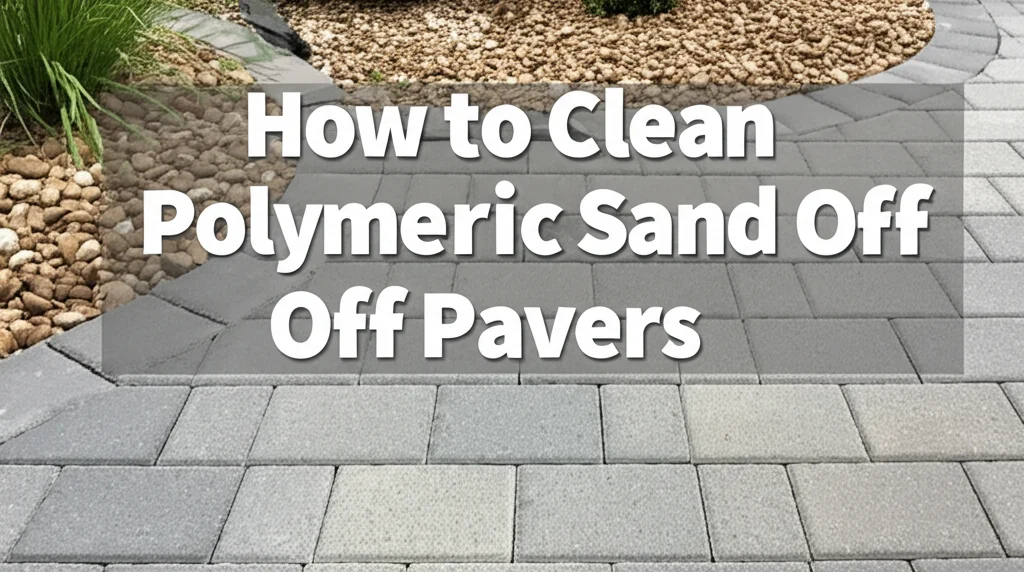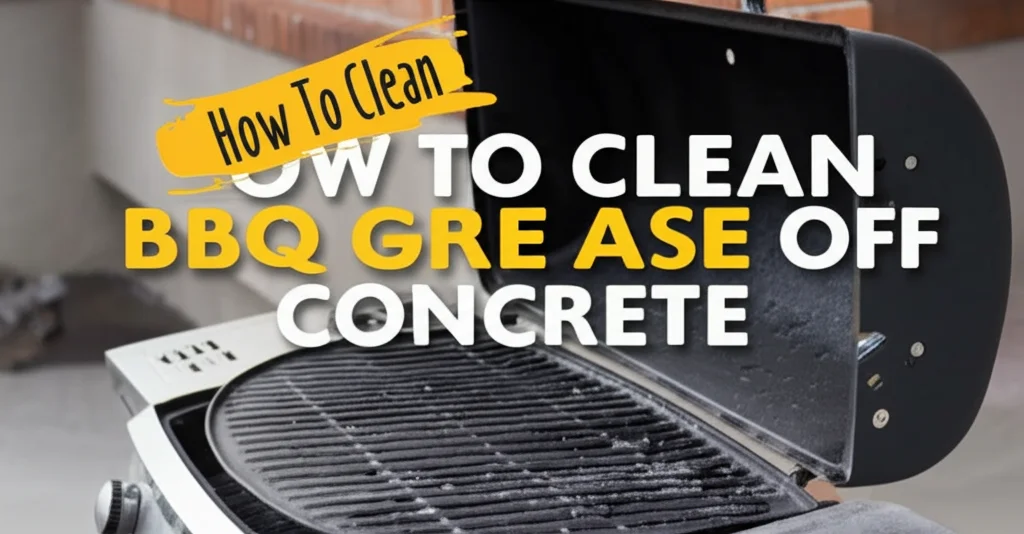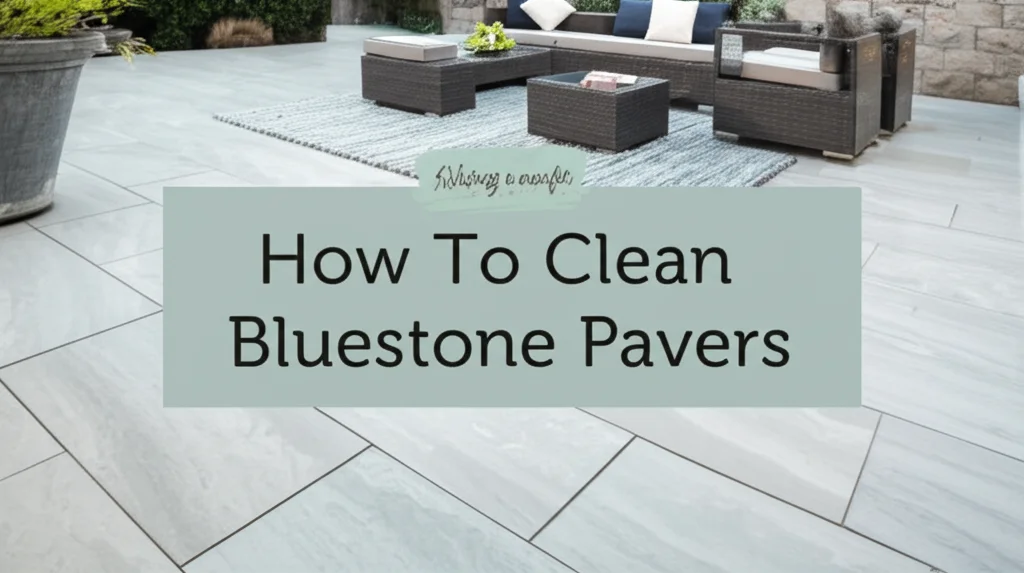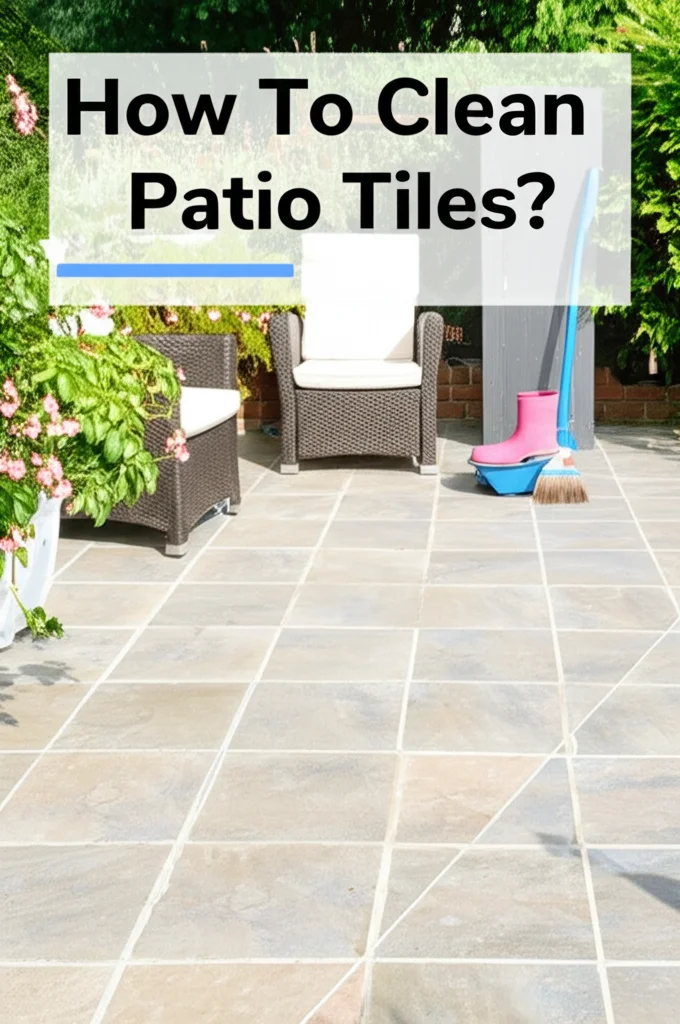· Outdoor Cleaning · 6 min read
How To Clean Polymeric Sand Off Pavers

Cleaning Up After Polymeric Sand: A Simple Guide
Have you just finished installing pavers and are now dealing with excess polymeric sand? Or perhaps rain washed some sand onto surfaces you’d rather keep clean? Don’t worry, it’s a common issue! Polymeric sand is fantastic for stabilizing pavers, but cleaning up the residue can feel tricky. This article will walk you through exactly how to clean polymeric sand off pavers, your patio, and surrounding areas, leaving everything looking its best. We’ll cover everything from the best tools to use to preventative measures to minimize the mess in the future.
Takeaway:
- Sweep away loose sand with a broom.
- Use a leaf blower to remove sand from crevices.
- Wash surfaces with water and a mild detergent.
- Avoid high-pressure washing, which can damage the pavers and sand.
Quick Answer:
To clean polymeric sand off pavers, start by sweeping away loose granules. Then, use a leaf blower to clear sand from tight spaces. Finally, gently wash the area with water and a mild detergent, avoiding high-pressure washing to preserve the paver integrity and the sand’s stabilizing effect.
Understanding Polymeric Sand and Why Cleanup Matters
Polymeric sand isn’t like regular sand. It’s mixed with polymers that, when activated with water, bind together to create a firm, weed-resistant joint filler between your pavers. This is why it’s so effective at keeping your patio or walkway stable and looking great. However, during installation and sometimes after rainfall, excess sand can end up on the paver surfaces, creating a hazy or gritty appearance. Cleaning this excess sand is important not only for aesthetics but also to prevent it from being tracked into your home. Leaving it can also affect the finish of your pavers over time.
The Best Tools for Polymeric Sand Removal
Choosing the right tools makes the job much easier. You don’t need anything fancy, but having the correct items will save you time and effort. Here’s a breakdown of what you’ll need:
- Broom: A stiff-bristled broom is essential for sweeping away loose sand.
- Leaf Blower: This is incredibly effective for removing sand from cracks and crevices.
- Garden Hose: For rinsing surfaces. A nozzle with adjustable spray settings is helpful.
- Mild Detergent: Dish soap works well for gentle cleaning.
- Soft-Bristled Brush: For scrubbing stubborn areas.
- Plastic Scraper (Optional): For removing hardened sand.
- Shop Vacuum (Optional): For collecting fine dust.
Sweeping Away the Loose Sand: The First Step
The first and easiest step is to sweep away any loose polymeric sand. Use a stiff-bristled broom and sweep in the direction of the pavers. This will help lift the sand without pushing it further into the joints. Don’t rush this step; a thorough sweep will remove a significant amount of the excess sand. Pay attention to edges and corners where sand tends to accumulate. Regular sweeping, even after the initial cleanup, will help prevent buildup.
Utilizing a Leaf Blower for Hard-to-Reach Areas
After sweeping, a leaf blower is your best friend. It’s perfect for blasting sand out of the small spaces between pavers and from any textured surfaces. Use a low to medium setting to avoid scattering the sand everywhere. Direct the airflow along the paver joints and across the surface. A leaf blower is particularly useful for removing sand that has settled into the paver patterns. Consider wearing eye protection during this step to prevent sand from getting into your eyes.
Washing Away Remaining Residue: A Gentle Approach
Once you’ve swept and blown, it’s time to wash the pavers. This is where a gentle approach is crucial. Avoid using a pressure washer, as it can erode the polymeric sand in the joints and even damage the pavers themselves. Instead, use a garden hose with a nozzle set to a gentle spray.
Mixing Your Cleaning Solution
Add a small amount of mild detergent (like dish soap) to a bucket of water. Mix well to create a soapy solution. Apply this solution to the pavers and let it sit for a few minutes to loosen any remaining sand. Then, rinse thoroughly with clean water. Ensure all soap residue is removed to prevent a slippery surface. If you’re looking for more information on cleaning solutions, you might find https://www.beacleaner.com/what-is-the-best-cleaning-solution-for-ceramic-tile-floors/ helpful for understanding different cleaning agents.
Dealing with Stubborn, Hardened Sand
Sometimes, polymeric sand can harden, especially if it’s been exposed to the elements for a while. In these cases, you’ll need a little more effort.
- Soft-Bristled Scrubbing: Use a soft-bristled brush and the soapy water solution to scrub the hardened sand. Avoid using abrasive brushes or scouring pads, as these can scratch the pavers.
- Plastic Scraper: For particularly stubborn spots, a plastic scraper can help lift the hardened sand. Be careful not to gouge or damage the paver surface.
- Soaking: If the sand is extremely stubborn, try soaking the area with soapy water for a longer period before scrubbing.
Preventing Future Messes: Tips and Tricks
Preventing a big mess is always easier than cleaning one up. Here are a few tips to minimize polymeric sand residue:
- Careful Application: During installation, apply the polymeric sand carefully and avoid overfilling the joints.
- Controlled Watering: When activating the polymeric sand, use a gentle spray and avoid overwatering.
- Protect Surrounding Areas: Cover nearby plants, furniture, and other surfaces to protect them from sand.
- Regular Sweeping: Sweep the pavers regularly to remove any loose sand before it becomes a problem.
- Consider a Sealant: After the polymeric sand has fully cured, consider applying a paver sealant to protect the surface and make future cleaning easier. You might also find information on protecting your floors useful in this article: https://www.beacleaner.com/how-to-clean-hardwood-floors-with-vinegar/.
Frequently Asked Questions (FAQ)
Q: Can I use a pressure washer to clean polymeric sand off pavers?
A: No, avoid using a pressure washer. The high pressure can erode the polymeric sand from the joints, compromising the stability of your pavers. It can also damage the paver surfaces themselves.
Q: How long does it take for polymeric sand to fully cure?
A: Polymeric sand typically takes 24-72 hours to fully cure, depending on the weather conditions. Avoid walking on the pavers during this time.
Q: Will rain wash away the polymeric sand?
A: Properly installed and cured polymeric sand is designed to withstand rain. However, heavy rainfall can sometimes wash away loose sand, requiring a touch-up.
Q: What if polymeric sand gets on my house siding?
A: Gently brush off any loose sand. For stubborn residue, use a soft-bristled brush and a mild detergent solution, rinsing thoroughly with water.
Q: Is polymeric sand safe for pets and children?
A: Once cured, polymeric sand is generally considered safe. However, avoid allowing pets or children to play on the pavers until the sand is fully cured.
Enjoy Your Clean Pavers!
Cleaning polymeric sand off pavers doesn’t have to be a daunting task. By following these simple steps and using the right tools, you can easily restore your patio or walkway to its original beauty. Remember to be gentle, avoid harsh chemicals and high-pressure washing, and take preventative measures to minimize future messes. With a little effort, you’ll be enjoying your clean and stable pavers for years to come. If you’re looking for more cleaning tips, check out https://www.beacleaner.com/how-to-clean-vinyl-plank-flooring/ for advice on other flooring surfaces.




